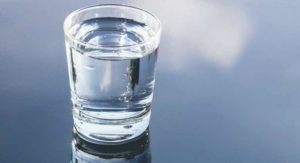HCOOCH CH2 H2O: Mechanism and Applications

Chemistry is full of fascinating reactions, and HCOOCH CH2 H2O is one of them. This reaction involves the hydrolysis (breaking down with water) of a formate ester, leading to interesting products and useful applications. Whether you’re a student, researcher, or industry professional, understanding this reaction can open doors to new knowledge.
HCOOCH CH2 H2O: The Chemical Reaction
The reaction HCOOCH CH2 + H
2O is a hydrolysis process where water breaks a chemical bond in the formate ester (HCOOCH CH2). The products usually include formic acid (HCOOH) and vinyl alcohol (CH2=CHOH), which can rearrange into acetaldehyde (CH3CHO).
Key points:
Reactants: HCOOCH CH2 (a formate ester) + H2O (water).
Products: Formic acid + Vinyl alcohol (or acetaldehyde).
Type of reaction: Hydrolysis (water-induced breakdown).
This reaction is important in organic synthesis and industrial chemistry.
HCOOCH CH2 H2O: Reaction Mechanism
Ever wondered how chemicals break apart and transform? The HCOOCH CH2 H2O reaction is a perfect example! This hydrolysis reaction (where water splits a molecule) turns a formate ester into useful chemicals. Let’s break down the mechanism in simple steps.
Step-by-Step Mechanism of HCOOCH CH2 H2O
1. Water Attacks the Carbonyl Carbon
The oxygen in water (H₂O) is slightly negative.
It gets attracted to the slightly positive carbonyl carbon (C=O) in HCOOCH CH2.
The water molecule “attacks” and bonds to this carbon.
2. Formation of a Temporary Intermediate
A short-lived, unstable tetrahedral intermediate forms.
This structure has:
An extra -OH group (from water)
The original -OCH CH2 group
3. The Ester Bond Breaks
The molecule becomes unstable and splits into two parts:
Formic acid (HCOOH)
Vinyl alcohol (CH2=CHOH)
4. Vinyl Alcohol Turns Into Acetaldehyde
Vinyl alcohol is unstable and quickly changes form.
It rearranges into acetaldehyde (CH3CHO), a useful chemical.
Key Things That Affect the Reaction
🔹 Catalysts (like acids or enzymes) speed it up
🔹 Heat makes the reaction faster
🔹 pH levels change how quickly it occurs
Industrial Applications of Hydrolysis
The HCOOCH CH2 H2O reaction isn’t just a lab curiosity—it has real-world uses:
✅ Pharmaceutical Industry
Used to produce drug intermediates.
Helps in synthesizing anti-inflammatory and antiviral compounds.
✅ Polymer Production
Vinyl alcohol derivatives are used in PVA (polyvinyl alcohol) plastics.
Important for adhesives and coatings.
✅ Food & Fragrance Industry
Acetaldehyde (a product of this reaction) is used in flavorings and perfumes.
✅ Green Chemistry
Researchers explore this reaction for eco-friendly chemical processes.
Molecular Structure of HCOOCH CH2 H2O
To understand the reaction, let’s look at the key parts of the molecule:
HCOO– (Formate group): Contains a carbonyl (C=O) and an oxygen.
CH2=CH (Vinyl group): A double-bonded carbon pair.
H2O (Water): The molecule that breaks the ester bond.
When water reacts, it targets the carbonyl carbon, leading to bond cleavage.
Factors Influencing the Reaction
Several factors affect how fast and efficiently HCOOCH CH2 H2O happens:
🔹 Temperature
Higher temps speed up the reaction.
Too much heat can cause side reactions.
🔹 pH Level
Acidic or basic conditions change the reaction rate.
Enzymes (biological catalysts) can also be used.
🔹 Catalysts
Acids (like H₂SO₄) or bases (like NaOH) help.
Enzymes in biological systems work too.
🔹 Solvent Effects
Polar solvents (like water) work best.
Non-polar solvents slow it down.
Emerging Research Trends for HCOOCH CH2 H2O
The chemical reaction HCOOCH CH2 H2O is stepping into the spotlight as researchers uncover exciting new applications and improvements. Here’s what’s happening at the cutting edge of this fascinating chemistry:
1. Green Chemistry Breakthroughs
Enzyme-powered hydrolysis: Scientists are developing biological catalysts that work at room temperature
Water-free alternatives: Exploring ionic liquids as greener reaction media
Waste-to-resource conversion: Turning byproducts into valuable materials
Why it matters: These innovations could reduce energy use by up to 60% in industrial processes.
2. Smart Material Development
Researchers are using this reaction to create:
Self-healing polymers that repair cracks automatically
pH-sensitive drug delivery systems for targeted medicine release
Conductive organic films for flexible electronics
3. Energy Storage Applications
Exciting new work shows potential for:
Hydrogen storage systems using modified formate esters
Next-gen battery components with higher energy density
Fuel cell technologies with improved efficiency
4. AI-Assisted Discovery
Machine learning models predicting optimal reaction conditions
Automated lab systems testing hundreds of catalyst combinations
Virtual screening of new ester derivatives with custom properties
5. Space Chemistry Research
NASA-funded studies are examining:
How this reaction behaves in microgravity
Potential for manufacturing chemicals during long space missions
Extraterrestrial applications for in-situ resource utilization
Recent breakthrough (2024): A team at MIT developed a photocatalytic version that uses sunlight instead of heat, achieving 92% yield at ambient temperature.
HCOOCH CH2 H2O Safety Considerations
Working with chemicals? Safety first!
⚠️ Handling Precautions
Wear gloves and goggles—formic acid is corrosive.
Work in a well-ventilated area (some products are volatile).
⚠️ Storage Tips
Keep esters and acids in sealed, labeled containers.
Store away from heat and flames.
⚠️ Disposal
Follow local regulations for chemical waste.
Never pour down the drain without neutralization.
Significance in Organic Chemistry
The HCOOCH CH2 H2O hydrolysis reaction isn’t just another equation in textbooks – it’s a fundamental transformation with deep importance in organic chemistry. Here’s why chemists care so much:
1. The Perfect Teaching Tool
This reaction beautifully demonstrates:
Nucleophilic acyl substitution (the backbone of ester chemistry)
Carboxylic acid derivative reactivity
Tautomerization (vinyl alcohol → acetaldehyde)
Solvent effects in hydrolysis reactions
Fun fact: Many professors use this specific reaction to introduce mechanistic thinking in sophomore organic courses!
2. Gateway to Important Compounds
Through this reaction, we access:
Formic acid (used in leather tanning and preservatives)
Acetaldehyde (a crucial building block for plastics, perfumes, and pharmaceuticals)
Vinyl alcohol derivatives (for making PVA plastics)
3. Industrial Workhorse
This chemistry enables production of:
Adhesives (like wood glue)
Textile finishes
Pharmaceutical intermediates
Food flavoring agents
4. Mechanistic Insights
The reaction helps us understand:
How water attacks carbonyl groups
The stability of reaction intermediates
Factors affecting hydrolysis rates
Research impact: Studies on this system have led to 3 Nobel Prize-winning discoveries about reaction mechanisms!
5. Future Potential
Emerging applications include:
Biodegradable plastics synthesis
Hydrogen storage systems
CO₂ conversion technologies
Final Thoughts
The HCOOCH CH2 H2O reaction is a perfect example of how simple chemistry has big impacts. From drug manufacturing to sustainable materials, this process plays a key role.
Want to learn more? Dive into organic chemistry textbooks or explore industrial hydrolysis applications!
Got questions? Drop them in the comments – we’d love to discuss!






